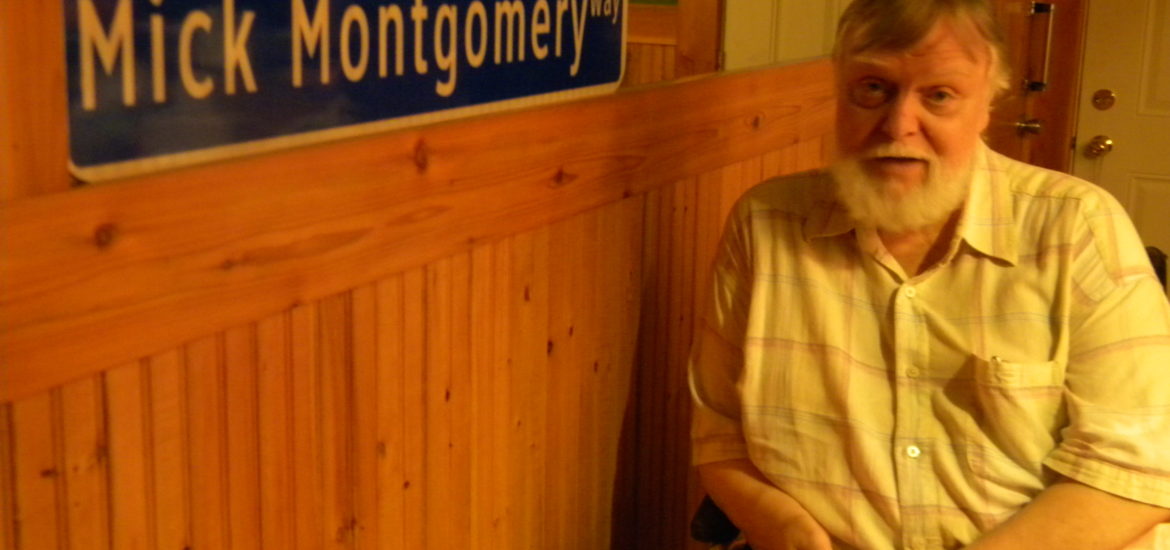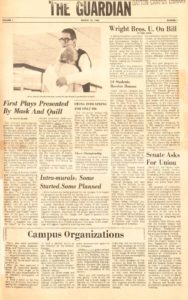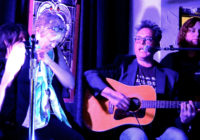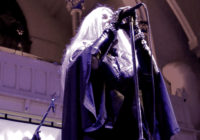The following is a combination of the first three parts of an unfinished five-part interview originally posted on The Wright State Guardian.
Mick Montgomery, a Wright State graduate and former West Carrollton art teacher has been a presence in the local Dayton scene since the ‘60s, experienced the San Francisco Haight/Ashbury hippie scene and owned Canal Street Tavern from 1981-2013. He booked and mentored countless local bands and national acts, giving several nationals their start. His path to Wright State started with a definite love of art but an uncertain long term focus. “I knew that I loved art and knew I wanted to study it but had no idea what I could do with it.”
Montgomery started the year the first issue of The Guardian was published. “I started in 1965, graduated in 1970.” Montgomery took a two-year hiatus going to California in the late ‘60s, returning to finish school in ’70. “I went to California after going to school for a while. I wasn’t getting good grades. I just wasn’t applying myself and wasn’t getting inspired to create a lot of art.” Montgomery’s focus was sculpture and painting. At the end of the semester the students had a museum-like showcase and were graded on their bodies of work. “In ’66, one of those came up, I had a few paintings but (not) really anything I was super proud of. It really made me realize that I wasn’t into it,” Montgomery admits. “If I was gonna be involved and cared about it, I should do it right. That was when I decided to leave Dayton. It was the beginning of the summer of love and if you’re going to San Francisco be sure to wear flowers in your hair.”
“Part of the reason, I wasn’t getting into school was because I was living in a commune house in East Dayton, that was a mad house and a band house,” Montgomery reflects. “The artsy bohemian people came to that house. It was a crazy scene. At least a dozen people shared that house.” Montgomery found it hard to concentrate with all the distractions at the time.
He was playing in a band called Tonto’s Headband featured as Dayton’s first psychedelic rock band. It was somewhat unheard of (at the time) to do originals. They were doing originals and “rocking” up old traditional tunes, with louder volume and more energy. “I really wanted to see what was happening in the San Francisco music scene. There were a couple bands I was totally obsessed with in that psychedelic scene.”
Montgomery went cross-country with five friends from the commune. The driver was from Middletown, home from Vietnam, decorated and very straight laced. He had the military hair cut so he stood out like a sore thumb. One of the girls persuaded him to drive.
That was when, military personal and hippies “didn’t get along.”
Hippie is a common blanket term now but back then Montgomery said it had a much harder meaning. “People don’t realize that the term hippie was the same as being called (something) derogatory. It was the meanest, worst thing you could call somebody. Usually when someone was called that they were looking to see if you’d back down, they were trying to start something.”
“The term (hippie) has been miss-stereotyped. It’s become much different than how people used and meant it back then. It was not a cool thing to be called.” The original meaning has been lost over time blanketed over by general use. “I remember the first time I ever saw that word in print. There was a story in the Dayton Daily News, about what they referred to as a clan, (not the KKK). It was a bunch of kids with long hair that hung out downtown on the courthouse steps.” They smoked weed and people were outraged by these dirty, long haired hippies hanging around downtown. “Back then, if you had long hair, you hung together because many times I had people trying to kick my ass. I wound up in fights all the time.”
Mick got to know the local kids playing in Tonto’s Headband playing at places they hung out. “I was playing at the Alley Door in the basement of the big church on First Street.” The Alley Door was a giant room, around back on the lower level. Tonto’s Headband were regulars playing for the long-haired kids. “We referred to ourselves as ‘heads’ or ‘long hairs.’ I was a little older so I used the term ‘bohemian.’ People that turned me on to that scene were from the old beatnik scene.”
Montgomery had his rock n’ roll spirit but lacked solo experience. “I was a rock kid, totally enthralled in Top 40. I was introduced to The Lemon Tree coffee house on Wayne Ave.” The Art Theatre was where Family Video is now and where all the foreign films like Fellini and Bergman were shown. The coffee house had an old fashioned brass expresso machine, with a big brass eagle on top. Montgomery went there often performing solo on stage for the first time. “I learned to get over stage fright having my voice go up half an octave from nerves.”
Week after week he sat and watched the touring folk singers, learning what they did and “borrowed” a few things. They had a “hootenanny” every Sunday for all the locals to play. This was pre-Tonto’s Headband. When they started, they were gonna take the scene and add rock n’ roll and psychedelic to it. “There’s no question it had to do with us experimenting with psychedelic substances,” Montgomery quips.
“I remember the first time I got a message that someone we knew got killed in Vietnam. It was a guy from Middletown, who played guitar and jammed at the house.” He was so paranoid last time I saw him, he had real long hair, a hell of a guitar player and a good singer. We got word eight months later he had been killed in action.” That was the first time it hit so close to home.
That’s what was going on before Montgomery left Wright State for California.
On the weekend the streets would be bumper to bumper with cars and kids, people with movie cameras, driving slowly taking pictures of everybody. “That was the scene when I first got there, it was culture shock,” Montgomery admits.
“While I was gone I got a world of reality and more of an education than any classroom. I had some of the most incredible experiences.” Montgomery lived communally in San Francisco’s Haight/Ashbury district, similar to the group home in East Dayton. “I did my share of panhandling. Anyone who lived in Haight/Ashbury panhandled.” The underground economy and touristas literally fed the movement. “In Dayton, every time I turned around some redneck wanted to beat (me up) for being a hippie, out there I’ll never forget the first time I walked up Haight Street I felt like I was in a Fellini movie. It was a circus.”
After leaving The Haight, Montgomery went to LA then visited Santa Fe. He returned to Dayton destitute but determined to return to W.S., get his degree, start teaching and save money to open a club in Dayton.
“Allyn Hall was the first building on campus. The cafeteria was in the basement where I met guitar players and musicians my age. It was a cool atmosphere.” It may sound weird but students hung out with their “Profs” (professors) back then. Oelman Hall was then built and used as the library at the time adding to a few basic building when he graduated.
When he came back from the West Coast he started an outside performance area called the Terrace Café on the side of the Oten Gallery in Yellow Springs. “We did that all summer, got my feet wet, had a tiny stage and got the people together from the old scene before I left to come out and play.”
Life in The Haight and LA gave Montgomery the real life experiences he needed and wanted, returning to Dayton and Wright State determined and rededicated to school full time. His focus earned him a 4.0 at graduation, furthering his education as Wright State’s first art grad assistant.
“I was the first grad assistant in the art education department. I was a grad assistant for a year there.” That year he got involved with student government who helped him start a club on campus called the Fireside Lounge. The new student center basement had the Rathskeller that sold pizza. The other side had a study room with a fireplace. “We had to make it portable. We only opened on Friday nights. We had some great shows with the AV departments small PA.” The Hot Mud Family played there with big crowds for local songwriters. The Hot Mud Family was the biggest acoustic, bluegrass act in southern Ohio at the time and was well regarded in the folk music world. They were playing all the big festivals back then and were guys from W.S. that I knew before.”
Part two will discuss Montgomery’s memories of the Wrightstock concert, his graduation, years teaching art and events leading to the beginning of Canal Street Tavern.
Feature image by Mike Ritchie










